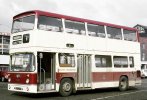Most Bournemouth Corporation double deck motor and trolley buses built between 1936 and 1962 had two staircases, with passengers boarding at the rear open doorway and exiting through the front doors. I don’t know if this layout was unique to Bournemouth?What about Bournmouth PD3 reg 8159EL front and rear staircase and separate entrance and exit , similaor to V3
-
Our booking engine at tickets.railforums.co.uk (powered by TrainSplit) helps support the running of the forum with every ticket purchase! Find out more and ask any questions/give us feedback in this thread!
You are using an out of date browser. It may not display this or other websites correctly.
You should upgrade or use an alternative browser.
You should upgrade or use an alternative browser.
TRIVIA: Operators (other than LT) with bespoke vehicle designs
- Thread starter AY1975
- Start date
- Status
- Not open for further replies.
Sponsor Post - registered members do not see these adverts; click here to register, or click here to log in
R
RailUK Forums
341o2
Established Member
- Joined
- 17 Oct 2011
- Messages
- 1,906
Mr R Edgley Cox, manager of Walsall Corporation designed a batch of trolleys known as Goldfishbowls due to the front windscreen, special dispensation had to be obtained from the Ministry as they were 30' long on two axles (anything over 27' 6" had to be 3 axle)
Cardiff also experimented with front and rear entrances and had its own design of trolleyhead
Cardiff also experimented with front and rear entrances and had its own design of trolleyhead
cnjb8
Established Member
The MCV Evora is operated by other operators, so not bespoke. Nor is the XLB as you've mentioned...Technically lots of Lothian is bespoke/specified for them because they seem to be one of a very few operators keen to keep using Volvo chassis:
- New Enviro 400 bodied 2 axle Diesel Volvo double deck chassis (yes there are some in London/Stagecoach but they are Hybrids)
- 3 axle double deck Enviro 400 xlb (although Stagecoach subsequently bought some for Cambridge)
- The new MCV/Volvo single deckers.
It is surprising to see them purchasing so many pure diesels as I think over the next 10 years we will see a tightening of the use of pure diesels in inner cities so will be interesting to see if the above live out their full design life in Edinburgh.
jp4712
Member
- Joined
- 1 May 2009
- Messages
- 470
No, the photo below isn't especially clear but Bury Corporation had the same layout before the war.Most Bournemouth Corporation double deck motor and trolley buses built between 1936 and 1962 had two staircases, with passengers boarding at the rear open doorway and exiting through the front doors. I don’t know if this layout was unique to Bournemouth?
 Bury Corporation 27, Whitefield railway station by Museum of Transport Greater Manchester archive, on Flickr
Bury Corporation 27, Whitefield railway station by Museum of Transport Greater Manchester archive, on FlickrThe original Alexander body for Liverpool was unique (the 10m version with long windows in the UKA/ XKC batches, and the additional bus built as a Leyland development vehicle and later sold to Rennies). Gavin Booth's history of Alexander refers to this body type as 2L though I think that might just be a function of Alexander's body numbering. There were a handful of other batches of steel framed L types built around the same time, but to very different designs (the Aberdeen PRG batch and the Bradford PKW/ TKU/ SKY batches).Indeed, the 'AL' bodywork on Merseyside seemed to be unique, although other 'AL' variants were broadly similar, the 10 acquired with Southport Corporation were to the more common style. Slightly off topic but the first 60 (1236-1295) were actually a cancelled Midland Red order, and MPTE managed to get their own specification for the bodywork, of which there were eventually 589 examples in the fleet, last one being on a 'B' plate (1070 which is preserved, as is the first, 1236).
The AL was then introduced when Alexander moved to alloy framing. Most variations in the AL design were around peaked or curved domes, and windscreen designs, but the Liverpool/ Merseyside ones had a unique style of side window which made them look very different.
The L-for-Liverpool thing is just a coincidence. Alexander body types started at A for double deckers and Z for single deckers and worked in towards the middle; L just happened to be the next available letter.
No, the photo below isn't especially clear but Bury Corporation had the same layout before the war.
Bury Corporation 27, Whitefield railway station by Museum of Transport Greater Manchester archive, on Flickr
Ralph Bennet, the General Manager of Bolton in the 1960s was responsible for the East Lancs Bolton Atlanteans with slanted non opening windows and fibreglass "sunroofs",which were unique to the town (OBN300H) is now the only one of 15 preserved, He then went to Manchester and designed the "Mancunian " bus with its deep front window, of which 500 were built for Manchester, but never selected by any other operator.
Attachments
Last edited:
CBlue
Member
Dublin Bus also operate E400 bodied Volvo B9TL's, so those aren't unique to Lothian either.The MCV Evora is operated by other operators, so not bespoke. Nor is the XLB as you've mentioned...
Strathclyder
Established Member
Indeed. Of course, one mustn't forget the two D10 prototypes when discussing BMMO/Midland Red vehicles, in many ways the ancestors to the Volvo B10M Citybus. A mid-engined double-deck citybus must've been space-age compared to even the Atlanteans and Fleetlines of the period. One can only speculate on what a fleet of these would've looked like if BMMO/Midland Red had been able to solve the techincal issues that came with mounting the engine in-between the axles over 20 years before Strathclyde PTE took delivery of Citybus prototype ESU 378X (AH1) in March 1982. Certainly, it's very likely that only the first batch of D9s would've been built had the D10s been more successful....Not forgetting the CM5 & CM6/CM6T coaches designed and built for motorway express services - capable of 80+ mph in 1959 (the M1 had no speed limit when it opened back then). The CM6 series had disc brakes all round in 1965 too.
As someone who grew up in 'Midland Red' land in the 1960s/early 70s, when we went on holiday buses elsewhere often seemed old-fashioned in comparison.
Attached images part of the Chris Martin collection & mikeyashworth Flickr stream respectively. Linked video from the FF3170 YT channel:
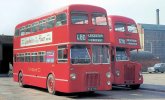
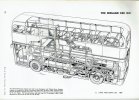
Mr R Edgley Cox, manager of Walsall Corporation designed a batch of trolleys known as Goldfishbowls due to the front windscreen, special dispensation had to be obtained from the Ministry as they were 30' long on two axles (anything over 27' 6" had to be 3 axle)
Walsall Corporation, under the aegies of Mr. Cox, also operated both the shortest and longest Fleetlines to ever see service on our shores: 1 UDH (25ft 7") and the Cummins V6-200 powered XDH 56G (36') (one of 17 such buses built, the rest for export to South Africa).
Linked images part of the Len Wright and Stuart Johnson Flickr collections respectively.
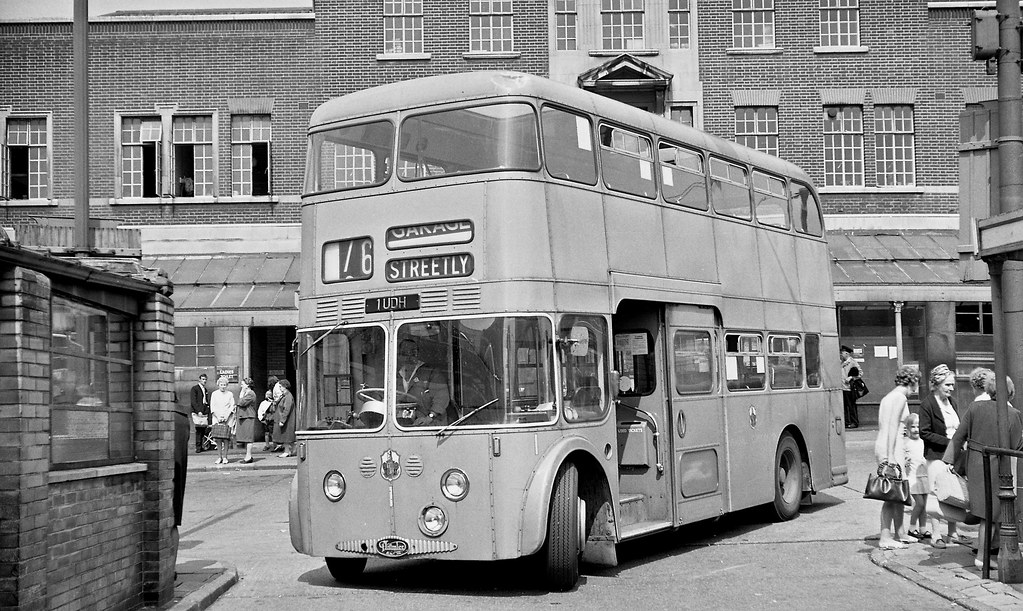
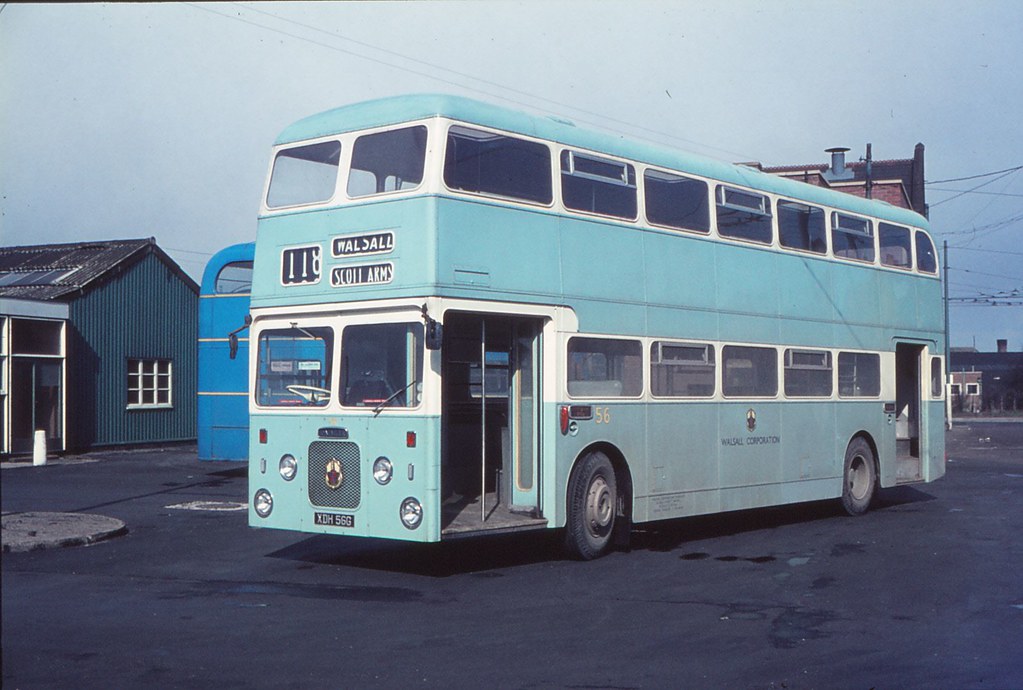
Let's just refer to what I said in post #57 in those two regards and leave it at that, eh?True. Just don't mention HSTs and class 442s... *ducks*
Last edited:
Lothian's 12 dual-door Lynxes (of which one, 188, is preserved) can definitely be classed as being "bespoke", as there was only the one such batch built.
In fact today (7th April) is the 30th anniversary of their launch at Edinburgh Castle, followed by entry into service.
In fact today (7th April) is the 30th anniversary of their launch at Edinburgh Castle, followed by entry into service.
Last edited:
I realise they were used at a number of subsidiaries, but at a group level might the various dual door minibuses introduced by Transit Holdings count?
I think there were three bodywork manufacturers and two chassis manufacturers used: Mellor (Rochdale) and Wadham Stringer (Waterlooville) on Iveco TurboDaily 59-12 chassis and Marshall’s (Cambridge) bodied both Iveco 59-12 and Mercedes- Benz 709D chassis.
I can't think of any non Transit Holdings companies that went down this route?
I think there were three bodywork manufacturers and two chassis manufacturers used: Mellor (Rochdale) and Wadham Stringer (Waterlooville) on Iveco TurboDaily 59-12 chassis and Marshall’s (Cambridge) bodied both Iveco 59-12 and Mercedes- Benz 709D chassis.
I can't think of any non Transit Holdings companies that went down this route?
Fishwick's at Leyland had a lot of one-off vehicles. As they were next door to Leyland Motors they were used to test new ideas and often bought prototypes from Leyland Bus.
A462LFV was a left-hand drive Atlantean AN69 (export) built 1978, converted to right-hand drive in 1983 and bodied by ECW.
GRW895W was built in 1975 as test chassis, then bodied in 1981 by ECW. It was a right-hand drive AN69 export model.
3 of the pre-production Titan B15 also ended up with Fishwick's.
A462LFV was a left-hand drive Atlantean AN69 (export) built 1978, converted to right-hand drive in 1983 and bodied by ECW.
GRW895W was built in 1975 as test chassis, then bodied in 1981 by ECW. It was a right-hand drive AN69 export model.
3 of the pre-production Titan B15 also ended up with Fishwick's.
Last edited by a moderator:
Mikey C
Established Member
- Joined
- 11 Feb 2013
- Messages
- 6,853
Of course in Europe, 3 door single deckers would be considered normal, and it's our single door buses which would be considered weird!
Whisky Papa
Member
- Joined
- 8 Aug 2019
- Messages
- 395
Only a small batch of buses, but the ECW bodied Bristol REs new to North Western and transferred to Crosville that had low roofs for use on the 38 from Warrington to Altrincham. Replace a batch of Bedford VALs I believe, but they were before my time.
Yes, you are correct about the earlier batch of VALs. Rigby's of Eccles later operated one on a school contract to my school in Urmston during the mid/late 1970s.
341o2
Established Member
- Joined
- 17 Oct 2011
- Messages
- 1,906
In the early days of trolleybuses, alternative methods of current collection apart from twin sprung booms. Stockport was the only British system to use the Lloyd-Kohler design, while Aberdare and Keighley used the Cedes-Stoll. One feature of both was that when buses met, they exchanged trolleys
Busaholic
Veteran Member
- Joined
- 7 Jun 2014
- Messages
- 14,091
Like Liverpool, Belfast Corporation experimented with an AEC Bridgemaster to compare with single examples of other buses including an Atlantean. It had a Harkness body built on Crossley frames, and remained unique. The year was 1958, Perhaps unsurprisingly, Belfast later standardised on the Daimler Fleetline, continuing a long local tradition with that marque, although I believe they later had a batch of Atlanteans too. I've never been to Belfast, and current events don't encourage me to!
GaryMcEwan
Established Member
Apart from Stagecoach Western and East Scotland in more recent times, I don't think any else had the MAN East Lancs Kinetic.
Reading Buses also had the very unique MAN East Lancs Kinetic Double Decker which I believe there was only one of which was with a few operators after that but now seems to have disappeared into the ether.
Reading Buses also had the very unique MAN East Lancs Kinetic Double Decker which I believe there was only one of which was with a few operators after that but now seems to have disappeared into the ether.
I can think of three unique batches of buses:
1. Wrights Commuter bus - only four were built.
https://www.flickr.com/photos/busma...9-26aN7G2-eb3Hy3-299hUfC-Qodixb-osXuPn-YK9RVV
(Not my photo)
2. Lex Maxata on Leyland Cub chassis. Crystals used one on TfL tendered route 146 (Downe to Bromley North); not sure if any others were built.
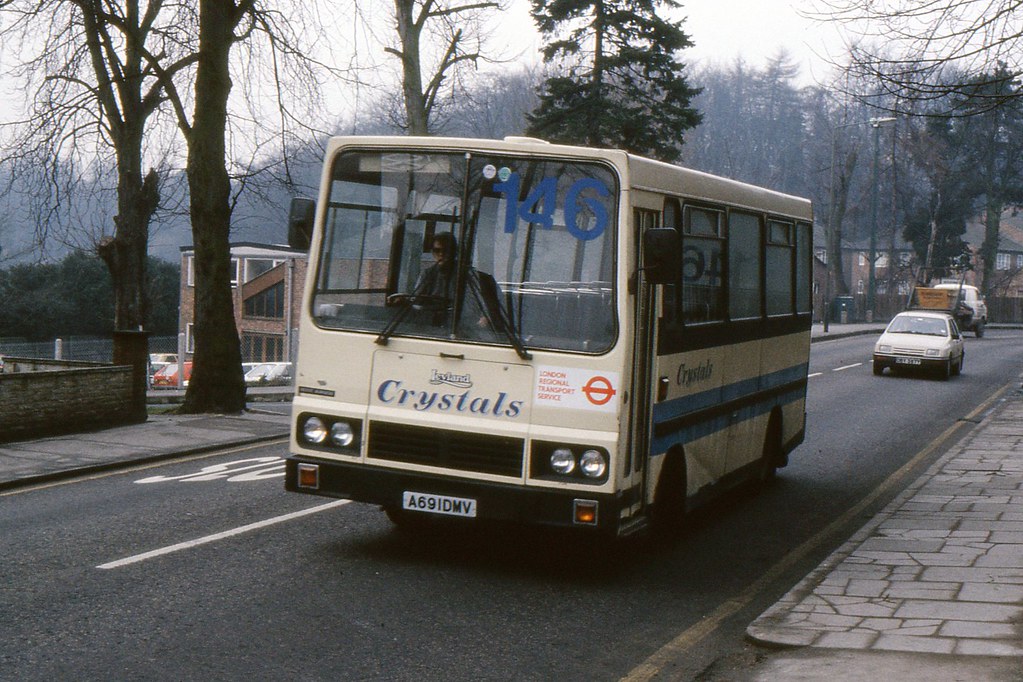
 www.flickr.com
www.flickr.com
3. Silcox of Pembroke Dock bodied / rebodied some of their buses. Here is a 1953 Bristol K6G rebodied by Silcox
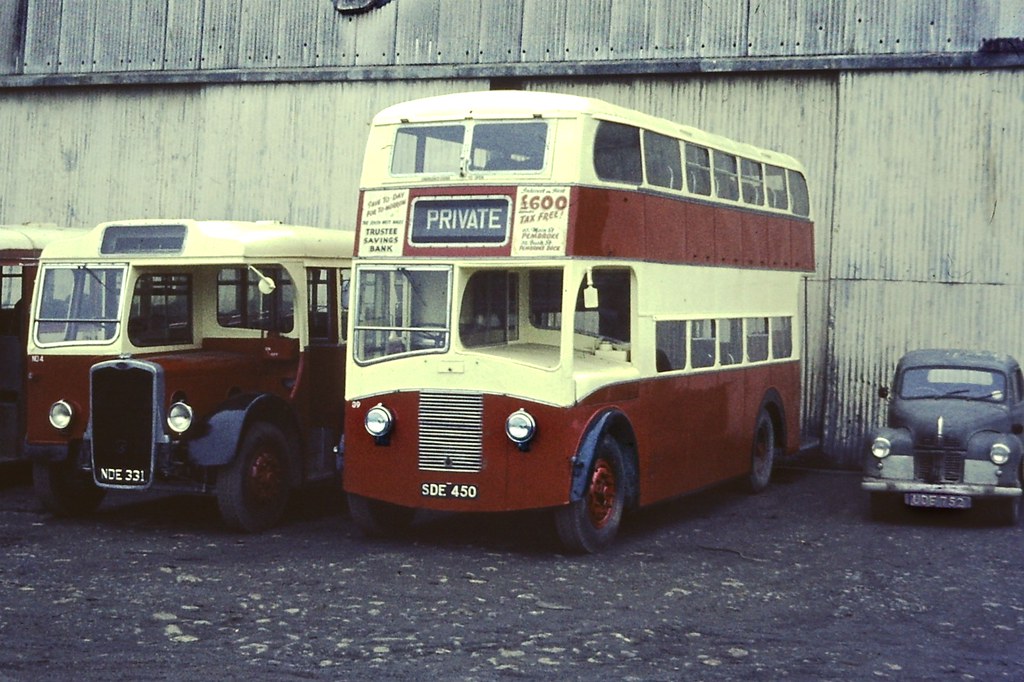
 www.flickr.com
www.flickr.com
Note - none are my photos
1. Wrights Commuter bus - only four were built.
https://www.flickr.com/photos/busma...9-26aN7G2-eb3Hy3-299hUfC-Qodixb-osXuPn-YK9RVV
(Not my photo)
2. Lex Maxata on Leyland Cub chassis. Crystals used one on TfL tendered route 146 (Downe to Bromley North); not sure if any others were built.

Crystals. Clear?
Running a tendered service for London Regional Transport in 1987, Crystals A691DMV is seen in Orpington. This was, I recall, a very cold day. The little bus is an unusual Leyland Cub, with Reeve Burgess body
3. Silcox of Pembroke Dock bodied / rebodied some of their buses. Here is a 1953 Bristol K6G rebodied by Silcox

Silcox SDE450
1953 Bristol K6G #39 with Silcox bodywork. Not the most handsome motor but it has a certain charm. (c)L.Murphy.
Note - none are my photos
CBlue
Member
I don't think anyone has mentioned the Quest 80's that were ordered by Merseyside PTE? As far as I'm aware they were so successful that they never turned a wheel in service with the PTE and were quickly sold off to independent operators.
Fairly revolutionary design though with lowering air suspension and fully wheelchair accessible. Not bad for 1985.
Fairly revolutionary design though with lowering air suspension and fully wheelchair accessible. Not bad for 1985.
TheSel
Member
Ah! These little beauties, as previously discussed on this Forum - here.I don't think anyone has mentioned the Quest 80's that were ordered by Merseyside PTE? As far as I'm aware they were so successful that they never turned a wheel in service with the PTE and were quickly sold off to independent operators.
Fairly revolutionary design though with lowering air suspension and fully wheelchair accessible. Not bad for 1985.
A couple of shots of mine, featuring B930KWM, new as Merseyside PTE 0085, with an anything-but-low floor Dennis Lancet alongside for comparison.
Wallasey, Seaview Road depot - November 1984.
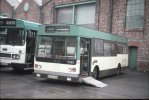
And after passing to David Tanner Travel - operating Service 7 to Prescot, seen in St Helens Bus Station - October 1994.
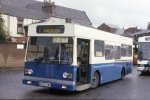
Busaholic
Veteran Member
- Joined
- 7 Jun 2014
- Messages
- 14,091
Looks like every expense was spared on the production line!Ah! These little beauties, as previously discussed on this Forum - here.
A couple of shots of mine, featuring B930KWM, new as Merseyside PTE 0085, with an anything-but-low floor Dennis Lancet alongside for comparison.
Wallasey, Seaview Road depot - November 1984.
View attachment 94218
And after passing to David Tanner Travel - operating Service 7 to Prescot, seen in St Helens Bus Station - October 1994.
View attachment 94219
TheSel
Member
Others have mentioned the low height profile Strachans bodied Bedfords and ECW bodied Bristol REs for North Western (REs subsequently passing to Crosville) to fit under the Dunham Massey canal bridge, but I don't see any reference above to the four ECW bodied ultra-low height LHs for East Kent, to suit a low bridge in the Ashford area; 1559 to 1562 - GFN559N etc.
Man of Kent
Member
- Joined
- 5 Jul 2018
- Messages
- 600
As the Flickr caption says, it is a Reeve Burgess body, not Lex. Bus Lists on the Web does show other vehicles of the same combination, including several with Southdown, which I think were purchased by East Sussex County Council for Rider services.2. Lex Maxata on Leyland Cub chassis. Crystals used one on TfL tendered route 146 (Downe to Bromley North); not sure if any others were built.

Crystals. Clear?
Running a tendered service for London Regional Transport in 1987, Crystals A691DMV is seen in Orpington. This was, I recall, a very cold day. The little bus is an unusual Leyland Cub, with Reeve Burgess bodywww.flickr.com
Strathclyder
Established Member
At least on the styling side of things, yeah. @CBlue is bang on when it comes to the low-floor and suspension tech though; not bad going for a bus from the mid-80s.Looks like every expense was spared on the production line!
Mikey C
Established Member
- Joined
- 11 Feb 2013
- Messages
- 6,853
If a tiny independent could produce a low floor bus 20 years before they started becoming mainstream, it does rather beg the question why it took so long for them to become the norm, especially for lighter vehicles like this which can use smaller, less intrusive wheels?At least on the styling side of things, yeah. @CBlue is bang on when it comes to the low-floor and suspension tech though; not bad going for a bus from the mid-80s.
Sorry, yes, you are right, this is it:The Seddons weren’t unique to Manchester as Lothian and Cardiff had them.
I think we’ve had a similar thread about unique batches to operators that, almost by definition, make them bespoke.
Trivia - Models of buses which have only ever been ordered by one operator
Title should be pretty self-explanatory really, but I am going to apply some fairly arbitrary criteria to avoid causing too much confusion: In order to be counted as the same model of bus it should be similar bodywork, built on the same chassis (or be an integral design), and use the same fuel...
www.railforums.co.uk
The first mainstream low-floor single deckers arrived in the UK market in 1993, having been pioneered in Europe somewhat earlier, so it wasn't quite such a large gap. Just like with battery and hybrid buses nowadays, the main barrier was the additional cost compared to a conventional vehicle. Most of the very early low-floor vehicles had their purchase price subsidised one way or another.If a tiny independent could produce a low floor bus 20 years before they started becoming mainstream, it does rather beg the question why it took so long for them to become the norm, especially for lighter vehicles like this which can use smaller, less intrusive wheels?
Mikey C
Established Member
- Joined
- 11 Feb 2013
- Messages
- 6,853
Sorry an embarrassing maths errorThe first mainstream low-floor single deckers arrived in the UK market in 1993, having been pioneered in Europe somewhat earlier, so it wasn't quite such a large gap. Just like with battery and hybrid buses nowadays, the main barrier was the additional cost compared to a conventional vehicle. Most of the very early low-floor vehicles had their purchase price subsidised one way or another.
CBlue
Member
Iirc Quest struggled like anything to package the drivetrain components, which I believe were a Ford Cargo engine driving through what I've heard described as a "chain linked u-drive"The first mainstream low-floor single deckers arrived in the UK market in 1993, having been pioneered in Europe somewhat earlier, so it wasn't quite such a large gap. Just like with battery and hybrid buses nowadays, the main barrier was the additional cost compared to a conventional vehicle. Most of the very early low-floor vehicles had their purchase price subsidised one way or another.
Apparently they were a maintenance nightmare especially compared to the other vehicles in use at the time, mostly due to the low floor layout much like more modern psv's.
Just take a look under a Trident for example and you'll see how much of a struggle it was to package engine + gearbox + driveline into such a small space - not much room left under the bonnet!
Strathclyder
Established Member
Were the first mainstream low-floor single decks the Merseyside Neoplan N4016s on L-TKB* regs (a N4014 demo on a K-EWG reg preceded them)? The demo ended up in Northern Ireland with Ulsterbus while the N4016s led a full service life, well into the Arriva North West era. Locals are welcome to correct me on this, but weren't they confined to the 18A (Croxteth Park Circular) for most of their lives, at least in the Arriva era (linked image from the DF57 OXF Flickr stream)?The first mainstream low-floor single deckers arrived in the UK market in 1993, having been pioneered in Europe somewhat earlier, so it wasn't quite such a large gap. Just like with battery and hybrid buses nowadays, the main barrier was the additional cost compared to a conventional vehicle. Most of the very early low-floor vehicles had their purchase price subsidised one way or another.

Arriva North West & Wales 6402 L402 TKB, Liverpool 21st Oct 2006
Arriva North West & Wales Neoplan N4016 6402 L402 TKB. Ex MTL North, February 2000.
*: Two (6411/6412) were delievered with L-THF regs before reverting to L-TKB regs a few months after delivery.
Mikey C
Established Member
- Joined
- 11 Feb 2013
- Messages
- 6,853
But then the Trident had the fully low floor to the back of the bus, whereas the smaller Dart SLF (and later E200s) only has the low floor section at the front, so the packaging at the rear shouldn't be any more difficult than on the high floor Dart?Iirc Quest struggled like anything to package the drivetrain components, which I believe were a Ford Cargo engine driving through what I've heard described as a "chain linked u-drive"
Apparently they were a maintenance nightmare especially compared to the other vehicles in use at the time, mostly due to the low floor layout much like more modern psv's.
Just take a look under a Trident for example and you'll see how much of a struggle it was to package engine + gearbox + driveline into such a small space - not much room left under the bonnet!
- Status
- Not open for further replies.

